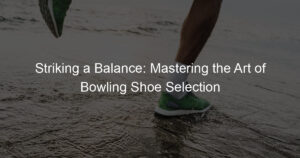
Introduction to Professional Athletes Footwear
Welcome to our comprehensive guide on professional athletes’ footwear. This article is designed to provide clear and informative content about the importance of choosing the right athletic footwear and how it can significantly impact an athlete’s performance.
- The importance of choosing the right athletic footwear
Choosing the right athletic footwear is not just about style or brand preference; it’s about performance, comfort, and most importantly, injury prevention. According to a study by the American Academy of Podiatric Sports Medicine, athletes who wear inappropriate footwear increase their risk of foot and ankle injuries. Therefore, it’s crucial for professional athletes to select the right shoes that can provide the necessary support, cushioning, and fit.
- Overview of the article
In this article, we will delve into the basics of athletic footwear selection, exploring the factors that influence professional athletes’ shoe choices. We will also look at case studies of famous athletes and their competition shoe selection. Finally, we will provide a step-by-step guide on choosing sports shoes and conclude with a discussion on the best footwear for athletes.
Our aim is to help athletes, coaches, and sports enthusiasts understand the importance of proper footwear in achieving optimal performance and preventing injuries. So, whether you’re a professional athlete or a fitness enthusiast, this guide will provide valuable insights into the world of athletic footwear.
Understanding the Basics of Athletic Footwear Selection
When it comes to professional sports, the right footwear can make a significant difference. It’s not just about style or brand; the components of the shoe play a crucial role in an athlete’s performance. Let’s take a closer look at these components.
Components of Sports Shoes for Professionals
Professional sports shoes are typically made up of four main components. Each of these parts has a specific function and contributes to the overall performance of the shoe.
- Upper: The upper part of the shoe is the top portion that covers the foot. It is usually made from a variety of materials, including leather, synthetic materials, or fabric. The upper needs to be durable and breathable to keep the foot comfortable and dry during intense physical activity.
- Insole: The insole is the interior bottom part of the shoe that sits directly beneath the foot. It is designed to provide cushioning and support to the foot’s arch. Some insoles are removable and can be replaced with custom orthotics for a more personalized fit.
- Outsole: The outsole, or the bottom part of the shoe that comes in direct contact with the ground, is made from various materials like rubber or synthetic compounds. It provides traction and durability. The design of the outsole can vary depending on the specific sport for which the shoe is intended.
- Midsole: The midsole is located between the insole and the outsole. It’s often made from foam or gel materials and is responsible for absorbing shock and reducing impact on the feet and legs during movement.
Understanding these components can help athletes make informed decisions when selecting their footwear. The right shoe can enhance performance, provide necessary comfort, and prevent injuries.
Types of Athletic Footwear
When it comes to athletic footwear, there are several types to choose from, each designed for specific activities and sports. Let’s take a closer look at the four main types:
- Running Shoes
- Training Shoes
- Field Sports Shoes
- Court Sports Shoes
Running shoes are designed specifically for forward motion. They have thick padding to absorb shock and provide comfort during long runs. The soles are flexible to allow for a wide range of motion, and they often have a raised heel to support the runner’s stride.
Training shoes, also known as cross-trainers, are versatile athletic shoes designed for various types of training. They offer a balance of support, cushioning, and durability. They are perfect for gym workouts, short-distance running, or any activity that involves side-to-side movement.
Field sports shoes are designed for outdoor sports like football, soccer, and baseball. They often have spikes or cleats on the bottom for better grip on grass or dirt. They are designed to provide support, stability, and traction on various surfaces.
Court sports shoes are designed for sports played on hard surfaces, like basketball, tennis, and volleyball. They have a flat and sturdy sole to provide stability during quick changes in direction. They also have extra cushioning to absorb the impact of jumps and landings.
Choosing the right type of athletic footwear can significantly improve your performance and reduce the risk of injuries. Remember, the best shoe for you depends on your specific activity, foot type, and personal comfort.
Factors Influencing Professional Athlete Shoe Choice
When it comes to choosing the right shoes, professional athletes have a lot to consider. One of the most important factors is the performance requirements of their sport. Let’s delve into the specifics.
Performance Requirements
Performance requirements are the physical demands that a sport places on an athlete. They can vary greatly depending on the sport, but there are three key areas that all athletes need to consider: speed, agility, and endurance.
- Speed
- Agility
- Endurance
Speed is crucial in many sports, from sprinting to soccer. The right shoes can help athletes run faster by reducing friction and providing optimal traction. Lightweight materials and streamlined designs can also contribute to speed.
Agility refers to the ability to change direction quickly and efficiently. This is particularly important in sports like basketball and tennis, where athletes need to make rapid movements. Shoes designed for agility typically have features like flexible soles and lateral support to aid in quick turns and pivots.
Endurance is the ability to maintain performance over a prolonged period. In long-distance running or cycling, for example, shoes need to provide consistent support and cushioning to help athletes sustain their efforts. Breathable materials and comfortable fit are also important to prevent discomfort and injuries.
In conclusion, the performance requirements of a sport play a significant role in determining the best shoe choice for professional athletes. By understanding these factors, athletes can make informed decisions that will help them perform at their best.
Personal Comfort and Fit
When it comes to choosing the right athletic footwear, personal comfort and fit are key factors that every professional athlete must consider. The size, shape, and cushioning of the shoe can greatly impact an athlete’s performance and comfort level during training and competition.
- Size
- Shape
- Cushioning
Getting the right shoe size is crucial for optimal performance and comfort. Shoes that are too small can cause discomfort and even lead to injuries such as blisters and black toenails. On the other hand, shoes that are too big can cause instability and increase the risk of tripping or falling. As a rule of thumb, there should be a thumb’s width of space between the end of your longest toe and the end of the shoe.
The shape of the shoe should match the shape of your foot. For instance, if you have wide feet, you should opt for shoes with a wide toe box. This will allow your toes to spread naturally and improve your balance and stability. Conversely, if you have narrow feet, shoes with a narrow toe box will provide a snug fit and prevent your feet from sliding inside the shoe.
Cushioning is another important aspect to consider when choosing athletic footwear. The right amount of cushioning can absorb shock and reduce the impact on your joints during high-intensity activities. However, too much cushioning can decrease your sense of connection with the ground and affect your performance. Therefore, it’s important to find a balance between comfort and functionality.
In conclusion, personal comfort and fit play a significant role in the selection of athletic footwear. By choosing the right size, shape, and cushioning, professional athletes can enhance their performance and reduce the risk of injuries.
Brand and Sponsorship Considerations
When it comes to choosing the right sports shoes, professional athletes often have to think about more than just performance and comfort. Brand loyalty and sponsorship deals can also play a big role in their decision-making process.
- Brand Loyalty
- Sponsorship Deals
Brand loyalty is when an athlete consistently chooses to wear shoes from the same brand. This can be due to a variety of reasons. Some athletes may find that a certain brand’s shoes fit them better or enhance their performance. Others may have an emotional connection to the brand, perhaps because they wore that brand’s shoes when they achieved a significant victory.
For example, basketball legend Michael Jordan is famously loyal to Nike. He has worn Nike shoes throughout his career and even has his own line of Nike shoes, known as Air Jordans.
Sponsorship deals are agreements where a shoe brand pays an athlete to wear and promote their shoes. These deals can be very lucrative, and they often influence an athlete’s choice of footwear. In some cases, the athlete may have little choice in the matter, as their sponsorship deal requires them to wear the sponsor’s shoes.
One of the most notable examples of a sponsorship deal is the one between basketball player LeBron James and Nike. In 2015, James signed a lifetime deal with Nike that is rumored to be worth more than $1 billion.
In conclusion, brand loyalty and sponsorship deals are significant factors that professional athletes consider when choosing their sports shoes. While these considerations may not directly affect the shoes’ performance or comfort, they can greatly influence an athlete’s choice of footwear.
Case Studies: Competition Shoe Selection of Famous Athletes
Let’s delve into the fascinating world of professional athletes and their shoe choices. We have selected three case studies that highlight the importance of the right footwear in enhancing performance and preventing injuries.
- Case Study 1: Usain Bolt and Puma
- Case Study 2: Michael Jordan and Nike
- Case Study 3: Serena Williams and Nike
Usain Bolt, the fastest man in the world, has always been loyal to Puma. His choice of footwear is the Puma Evospeed Electric Bolt, designed specifically for him. These shoes are lightweight, with a stiff plate and eight spikes for maximum traction. The shoe’s design also reduces the risk of injuries, allowing Bolt to focus on his speed.
Michael Jordan, one of the greatest basketball players of all time, is synonymous with his Nike Air Jordans. These shoes were designed with Jordan’s playing style in mind. They offer excellent grip, ankle support, and cushioning, which are essential for a basketball player. The Air Jordans revolutionized athletic footwear and are still popular today.
Serena Williams, a tennis legend, wears the NikeCourt Flare 2. These shoes are designed for agility and speed, two crucial elements in tennis. They also provide excellent ankle support and have a durable sole for hard court surfaces. Williams’ shoe choice reflects her need for footwear that can keep up with her powerful and dynamic play.
In conclusion, the right shoe can make a significant difference in an athlete’s performance. It’s not just about brand endorsement deals; it’s about choosing footwear that enhances performance, provides comfort, and prevents injuries.
| Athlete | Shoe Brand | Key Features |
|---|---|---|
| Usain Bolt | Puma | Lightweight, stiff plate, eight spikes |
| Michael Jordan | Nike | Excellent grip, ankle support, cushioning |
| Serena Williams | Nike | Agility, speed, ankle support, durable sole |
Choosing Sports Shoes: A Step-by-Step Guide
Step 1: Understanding Your Needs
Choosing the right sports shoes is not just about style, it’s about your comfort and safety too. The first step in this process is understanding your needs. This involves knowing the type of sport you’ll be participating in, your foot type, and your personal comfort preferences.
Each sport has specific demands and requires different types of shoes. For example, basketball shoes are designed to provide ankle support for sudden changes in direction, while running shoes are built for forward motion and cushioning. Knowing the specific demands of your sport is crucial in choosing the right shoes.
| Sport | Shoe Characteristics |
|---|---|
| Basketball | Ankle support, stability |
| Running | Cushioning, lightweight |
| Soccer | Studs for grip, lightweight |
Next, understanding your foot type is essential. There are three basic foot types: flat, neutral, and high-arched. Each foot type requires different shoe features for optimal comfort and performance. For instance, people with flat feet often need shoes with added arch support, while those with high arches may require extra cushioning.
Finally, personal comfort preferences play a significant role. Some athletes prefer tighter fitting shoes for better control, while others may prefer a looser fit for comfort. Remember, no matter how well a shoe is rated or recommended, if it doesn’t feel comfortable to you, it’s not the right shoe.
Understanding your needs is the first step towards making an informed decision about your sports shoes. It sets the foundation for the next steps in this guide: researching options, trying on and testing, and making the final decision.
Step 2: Researching Options
Now that you have a clear understanding of your needs, the next step is to research the different options available. This step is crucial as it helps you to find the best athletic shoes that will meet your specific needs.
There are several factors to consider when researching options. These include:
- Brand: Some brands specialize in certain types of sports shoes. For example, Nike and Adidas are renowned for their running shoes, while Under Armour is known for their training shoes.
- Price: The cost of athletic shoes can vary greatly. It’s important to set a budget and stick to it. Remember, the most expensive shoe is not always the best.
- Reviews: Reading reviews from other athletes can provide valuable insights into the performance and comfort of different shoe models.
- Features: Different sports require different features in a shoe. For example, basketball shoes often have a high-top design for ankle support, while running shoes are designed for forward motion.
It’s also worth noting that professional athletes often have custom-made shoes to meet their specific needs. For example, basketball player LeBron James has a shoe line with Nike that is designed to meet his specific needs on the court.
| Brand | Specialization |
|---|---|
| Nike | Running Shoes |
| Adidas | Running Shoes |
| Under Armour | Training Shoes |
Remember, the goal of this step is not to find the perfect shoe, but to narrow down your options to a few potential choices. The next step, trying on and testing, will help you make the final decision.
Step 3: Trying on and Testing
Once you’ve done your research and narrowed down your options, it’s time to try on and test your potential sports shoes. This step is crucial in the selection process. Remember, the best shoe for you is not only about the brand or the style, but also about how it fits and feels when you’re using it.
Here’s how to do it:
- Proper Fit: The shoe should fit snugly but not too tight. There should be enough room for your toes to move, but your foot shouldn’t slide around inside the shoe.
- Comfort: Walk around in the shoes. They should feel comfortable right away. If they don’t, they probably won’t feel better with time.
- Test Run: If possible, do a test run. This will give you a better idea of how the shoes will perform during your sport or activity.
Remember, everyone’s feet are different. What works for one person might not work for you. So, listen to your body and choose the shoe that feels best for your feet.
| Criteria | Description |
|---|---|
| Fit | The shoe should fit snugly but not too tight. |
| Comfort | The shoe should feel comfortable right away. |
| Test Run | Do a test run to see how the shoe performs during your sport or activity. |
As the famous athlete Michael Jordan once said, “The key to success is to keep growing in all areas of life – mental, emotional, spiritual, as well as physical.” Choosing the right sports shoe is a key part of your physical growth and success in your chosen sport. So, take your time, try on different options, and make sure you’re making the best choice for you.
Step 4: Making the Final Decision
Now that you’ve done your research, understood your needs, and tried on different options, it’s time to make the final decision. This step is crucial, as the right pair of sports shoes can significantly enhance your performance.
Consider Comfort: The most important factor in choosing athletic footwear is comfort. No matter how stylish or popular a shoe is, if it’s not comfortable, it won’t serve its purpose. Remember, you’ll be wearing these shoes for extended periods while training or competing. Discomfort can lead to poor performance and even injuries.
Think About Durability: Professional athletes put their shoes through a lot. Therefore, durability is a key factor to consider. A good pair of sports shoes should withstand the rigors of your sport and last for a reasonable period.
Value for Money: While it’s true that professional-grade sports shoes can be expensive, they’re often worth the investment. However, it’s essential to ensure you’re getting good value for your money. A higher price doesn’t always mean better quality.
| Consideration | Description |
|---|---|
| Comfort | The shoe should fit well and feel comfortable during activity. |
| Durability | The shoe should withstand the rigors of your sport and last for a reasonable period. |
| Value for Money | The shoe should be worth the investment, providing both quality and durability. |
Remember, the best shoe for you is the one that meets your specific needs, fits well, and feels comfortable. Don’t rush your decision. Take your time, consider all the factors, and make an informed choice. Your feet will thank you!
Conclusion: The Best Footwear for Athletes
In this article, we’ve journeyed through the world of professional athletic footwear, understanding its basics, factors influencing choice, and even delving into case studies of famous athletes. We also provided a step-by-step guide to choosing the right sports shoes. Let’s recap and offer some final thoughts.
- Recap of the Article:
- Final Thoughts and Advice:
We started by introducing the importance of professional athletic footwear, highlighting that the right shoes can significantly impact an athlete’s performance. We then explored the basics of athletic footwear selection, emphasizing the importance of factors like shoe type, fit, material, and design. We also looked at how different athletes make their shoe choices, with case studies of famous athletes like Serena Williams and Usain Bolt.
Finally, we offered a step-by-step guide to choosing sports shoes, emphasizing the importance of understanding your foot type, choosing the right shoe size, considering the shoe’s material and design, and testing the shoe before purchase.
Choosing the right athletic footwear is crucial for any athlete. It’s not just about style or brand; it’s about finding a shoe that fits well, supports your foot, and suits your sport or activity. Remember, every foot is unique, and what works for one athlete may not work for another. So, take your time, do your research, and don’t be afraid to try on different pairs until you find the one that feels just right.
Remember, “The right shoe can make an athlete, but the wrong one can break an athlete.” – Anonymous









